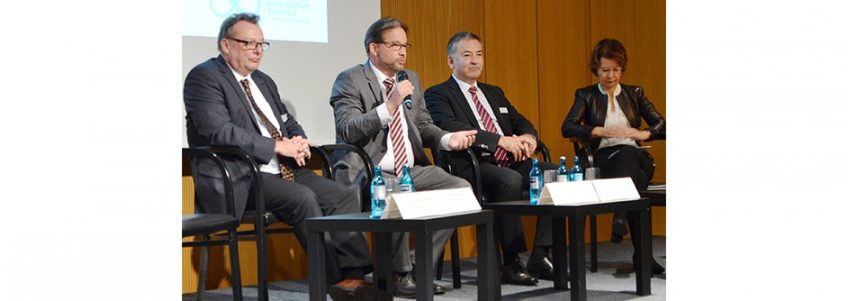„As an automotive stronghold, Germany is capable of more. The energy transition only works with renewable energies, be they electricity and gas from renewables or with biofuels”, says Nils Boenigk, Acting Managing Director of the AEE (Renewable Energies Agency).
More than 46 million cars registered in Germany were on the road in the past year. The federal government’s climate protection plan foresees the reduction of transport emissions by 40 to 42 per cent by 2030 compared to the reference year of 1990. However, CO₂ emissions of newly-registered cars in 2017 in Germany was, at 127.1 grams per kilometre, the highest in the whole of Europe, according to the European Environment Agency (EEA). “Without a fundamental rethink of the transport sector, these climate goals are mere hollow words”, said Boenigk during the conference.
In 2017 renewable energies only met 5.2 per cent of the final energy demand in road transport, with biofuels continuing to account for the largest share. “An energy transition in road transport is unthinkable without biofuels. Depending on the resource used, biodiesel and bioethanol reduce greenhouse gas emissions by 65 to 90 per cent compared to fossil fuels”, according to Elmar Baumann, VDB Managing Director. “To achieve climate protection goals, aside from a massive ramp-up of electric mobility, Germany also needs an increase of the greenhouse gas quota for fuels to 16 per cent in the year 2030, with biofuels providing half.”
Since the end of 2011, the number of charging points for electric mobility in this country has more than quadrupled. By the end of June 2017 there were already 10,700 charging points for electric cars in Germany. The number of hydrogen refuelling stations will also continue to be increased. “The technology for the energy transition on roads has reached market maturity. There is a zero-emission solution for all types of vehicles – electric drives can be used with either batteries or fuel cells depending on the requirements of vehicle size, drive power and range,”, says Dr. Klaus Bonhoff, Managing Director (Chair) of NOW GmbH. “In the nationwide development of the relevant charging and refuelling options, rapid advances have been made not least through the funding programmes of the federal government.”
The energy transition in transport is not a one-way street, as the remarks on the latest study results by Dana Gruschwitz, Senior Project Leader of the social research institute Infas, illustrated. In all discussions about emissions and climate protection, the car driver must not be ignored. Despite many alternatives like bikes or buses or the underground, people in cities still like to drive their own car. Autonomy and a sense of calm are important aspects which connect people to their own car or that of their parents. “The car is the real starting point to make a genuine impact on the energy transition in road transport”, said Gruschwitz. The popularity of the car extends across all age groups. “If we do nothing, the dominance of the car will not diminish”, said Gruschwitz.
The sustained popularity of the car underlines that the energy transition in transport must be conceived together with car drivers. The makes the interaction between electric mobility, biofuels and synthetic fuels combined with sustainable mobility concepts all the more important in order to be able to reduce CO₂ emissions in transport.


